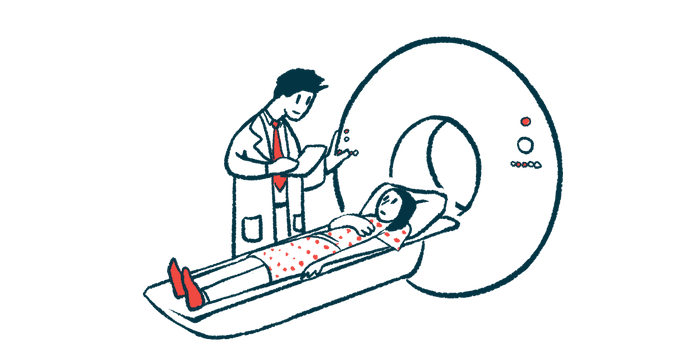Friedreich’s ataxia as disease of ‘whole brain’ supported in MRI study
Changes in cerebellum-cerebral cortex connections tied to FA severity

Altered connections between the cerebellum, a brain region important for coordinating voluntary movements, and the cerebral cortex, involved in higher-level processes, are associated with greater severity of Friedreich’s ataxia (FA), an MRI study showed.
Unusual changes in connectivity also were seen to correlate with damage to the brain’s white matter.
Together, these results contribute to the view that FA is a “whole-brain” disease and support links between imaging markers of brainwide abnormalities, the researchers noted.
Further studies are needed to investigate cerebellum-cerebral connectivity changes over time, their relationship with symptom progression, and their potential as biomarkers to track disease, they noted.
A ‘convergence of abnormalities in brain function, brain structure, clinical status’
The MRI study, “Reduced cerebello-cerebral functional connectivity correlates with disease severity and impaired white matter integrity in Friedreich ataxia,” was published in the Journal of Neurology.
FA is an inherited, progressive condition primarily characterized by a lack of coordination or muscle control during voluntary movements, referred to as ataxia.
Such disease symptoms arise with the degeneration of nerves in the spinal cord and the cerebellum, the structure at the back and base of the brain that plays an essential role in motor control.
Connections between the cerebellum and the cerebral cortex, the outer layer responsible for the higher-level processes that include executing voluntary movements, are also compromised in FA.
Researchers with Monash University in Australia applied functional MRI imaging, which measures brain activity by detecting changes in blood flow, to map differences in connections between subregions of the cerebellum and cerebral cortex. Their study involved 35 FA patients and 45 unaffected and age-matched people as controls.
They then investigated relationships between identified differences in functional connectivity and disease severity, psychomotor function (voluntary movements), and white matter integrity.
Compared with controls, FA patients showed significantly less functional connectivity of the anterior lobe at the top of the cerebellum, primarily associated with motor function, and the primary motor cortex, responsible for controlling voluntary motor movements.
These connectivity deficits significantly correlated with worse ataxia, as assessed by the Scale for the Assessment and Rating of Ataxia (SARA), and a slower rate of finger tapping, a measure of psychomotor function.
FA patients also showed significantly reduced functional connectivity between the cerebellum’s larger superior posterior lobe, immediately below the anterior lobe and primarily associated with nonmotor processes, and the left dorsolateral prefrontal cortex, involved in executive function (decision-making) and working memory.
“The convergence of abnormalities in brain function, brain structure, clinical status, and behavioural performance was most evident in the motor system, although not exclusively,” the researchers wrote.
Worse SARA scores also significantly linked with reduced functional connectivity between the superior posterior lobe of the cerebellum and the dorsolateral prefrontal cortex. No significant correlations were found between connectivity and disease duration or age at symptom onset.
Widespread reductions in white matter integrity, marking damage to nerve fibers coated with the fatty layer called myelin, were seen in the FA group relative to controls.
Weaker functional connectivity between the cerebellum’s anterior lobe and the primary motor cortex was associated with white matter damage in patients. Widespread involvement was also seen in the corpus callosum, which consists of white matter tracts connecting the brain’s left and right sides.
“This study provides novel evidence of alterations in cerebello-cerebral connectivity that correlate with disease status, psychomotor function, and white matter integrity in people with [FA],” the researchers concluded. “These changes are robust in primary motor systems, with more limited and spatially targeted effects in non-motor circuits.”
These findings support studies over time to investigate links between “cerebello-cerebral network changes and symptom progression, and their potential as biomarkers for disease tracking,” the researchers added.







